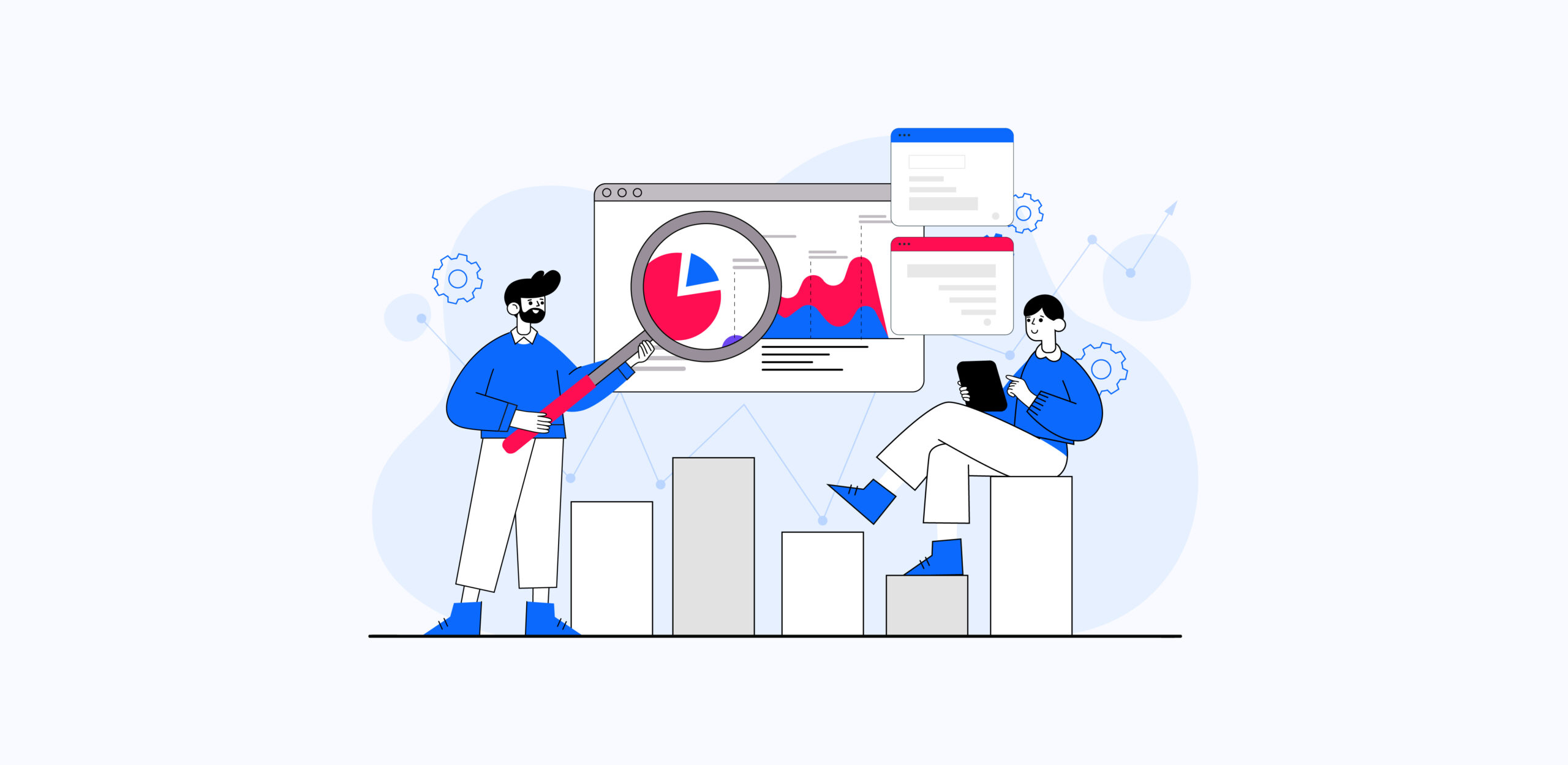The rapid growth of AI writing tools has made AI detectors increasingly common. Whether you are a student, marketer, or content creator, you are likely wondering: how to beat AI detectors effectively without getting flagged? The good news is you do not need to trick or dupe detection tools; rather, you can learn how to remove AI content by humanizing your writing, making it sound like something only you could have written.
What is an AI Detector?
Before we dive into how to beat AI detectors, let’s quickly understand what we are up against. An AI detector is simply a software tool designed to figure out if a piece of text was written by a human or by an Artificial Intelligence (AI) program, like ChatGPT or Gemini.
Think of it like a smart checker. These tools use special computer programs that have “learned” from countless examples of both human-written and AI-generated text. They look for certain patterns, styles, and ways of using words that are more common in computer-generated content. Their goal is to identify text that seems to come from a machine rather than a person.
AI detectors are becoming common in many areas, from schools checking essays to online platforms ensuring content is original. They’re trying to keep up with the fast growth of AI writing tools.
Why Content Gets Flagged by AI Detectors
AI detection tools work by identifying patterns often found in machine-generated text. These can include:
- Repetitive phrasing and sentence structures: AI models often fall into predictable rhythms, meaning they use the same types of sentences, start sentences in similar ways, or repeat connecting words too often. Think of it like a robot always taking the same steps. Human writers, though, naturally mix things up. They will use short sentences sometimes, long ones at other times, and vary how they begin each sentence. This makes their writing much more dynamic and interesting to read, almost like a natural conversation.
- Overly formal or predictable flow: Imagine someone who always talks like a textbook – very proper, very logical, and never casual. That’s often how AI writes. It tends to produce text that’s consistently formal and follows a very strict, step-by-step order. It’s like it’s always presenting a report. But when people write, they naturally shift tones. We might throw in a friendly comment, ask a question to make you think, or use a more relaxed phrase. These little changes in pace and style are what make human writing feel natural and engaging, something AI struggles with.
- Lack of originality and personal anecdotes: AI models learn from huge amounts of text found online, but they don’t experience life. They lack genuine consciousness, personal memories, or unique opinions. So, their writing often feels generic. Human writing, however, shines because it comes from a real person. We weave in our own stories, share specific examples from our lives, offer unique insights, or even have subtle preferences or biases. It’s these personal touches and original thoughts that make content truly unique and almost impossible for an AI detector to mistake for machine-generated text.
- Grammatical consistency (sometimes too perfect): You might think perfect grammar is always good, right? Well, for AI detectors, sometimes it’s too good. AI’s output can be unnervingly flawless in its grammar and sentence construction. Human writing, even by very skilled writers, often has subtle imperfections. We might have slightly awkward phrasing here, a sentence that’s a bit longer than ideal there, or a minor grammatical slip. These tiny “imperfections” are actually very human and can add to the authenticity of the text, making AI’s constant perfection a red flag.
- Limited vocabulary diversity: While AI has access to a massive dictionary, it often defaults to a narrower range of common words and phrases, especially when it’s trying to keep things simple and clear. It might use the same basic words repeatedly. Human writers, on the other hand, naturally use a much wider and more varied vocabulary. We might pick a more precise synonym, use a less common but more descriptive term, or simply find different ways to say the same thing to avoid repetition. This organic variation in word choice is a strong indicator of human authorship.
How to Beat AI Detectors by Humanizing Your Content
The goal is not to “cheat” AI detectors, but to “humanize” AI-generated content, making it sound just like human-written text. This section will guide you on how to beat AI detectors effectively and ethically. Here are proven AI detection bypass techniques you can implement without risking penalties:
Rephrase and Vary Sentence Structure
AI often produces sentences of similar lengths and structures. Break this pattern by mixing lengths (combining short with longer sentences) and varying how a sentence starts (avoiding always beginning with the subject).
AI-generated example: “The company initiated a new product launch. The product was well-received by the customer base. Sales figures demonstrated a rapid increase in volume. This led to enhanced market presence.”
Humanized example: “When we launched our new product, customers flocked to it almost immediately, and our sales just took off.”
Inject Your Unique Voice and Personal Anecdotes
AI lacks real-world experience. Weave in your own stories, opinions, and insights. This makes your content truly original and almost impossible for an AI detector to flag as machine-generated. Use rhetorical questions, humor, or emotional language to add a human touch.
AI-generated example: “Content marketing is important for businesses. It helps to establish brand presence and connect with the target audience. Implementing a robust content strategy can lead to increased website traffic and improved conversion rates, which are essential for sustained growth in the digital landscape”
Humanized example: “Content marketing is crucial for audience engagement. From my own experience, I have found that sharing a personal anecdote, like that time I nearly gave up on my blog before a single post went viral, truly connects with readers in a way pure data never could.”
Diversify Vocabulary and Tone
AI often uses common or overly formal words. Substitute certain words with synonyms or more descriptive terms. Use a mix of formal and conversational tones, or even some subtle imperfections that a human might naturally make. Avoid jargon unless genuinely necessary.
AI-generated example: “It is necessary to optimize web functions. This involves improving the efficiency of various website components. Enhanced performance leads to a superior user experience.”
Humanized example: “It’s absolutely vital to fine-tune website performance, rather than simply letting it ‘run’ in the background.”
Manual Editing and Proofreading
Never publish AI-generated content without a thorough manual edit. This crucial step allows you to refine the text, correct any awkward phrasing, add context, and ensure factual accuracy. Fact-checking is paramount.
Embrace Imperfection and Nuance
Human writing is not always perfect. Do not be afraid to introduce subtle inconsistencies, slight tangents, or “filler” words (like “actually,” “kind of,” “you know”) sparingly and naturally. AI often struggles with the subtleties of human communication, so emphasizing nuance and context can strongly indicate human authorship.
AI-generated example: ” The operational process is designed to be simple and efficient. All steps are streamlined for maximum productivity. User interaction is minimized to ensure optimal results.”
Humanized example: “The process is actually quite straightforward and, you know, remarkably efficient provided you follow all the steps carefully.”
Leveraging AI Humanizer Tools
While manual humanization is ideal, several tools are designed to humanize AI-generated content. Platforms such as QuillBot, Undetectable AI, and Humanize.io can rephrase text to sound more natural and less robotic by varying sentence structure, diversifying vocabulary, and adding more human-like flow. These tools can be useful for quickly transforming initial AI drafts, but always remember to review and refine their output manually to truly make AI content undetectable and unique.
Comparing the Best AI Detection Tools (And What They Miss)
Understanding how AI detectors function helps you improve your writing and beat AI detection tools. Here is a breakdown of three widely used detection tools with supporting benchmark data:
| Tools | Detection Strength | Notes & Sources |
| Originality.ai | High detection of GPT-3.5/4 content | The RAID benchmark study reports strong accuracy and low false positives (source). |
| GPTZero | Reliable on formal academic content | According to a peer-reviewed study, the tool shows strong detection but may flag human-written text when overly polished. |
| Copyleaks | Varies by content type (e.g., essays, fiction, science) | Research from arXiv shows detection accuracy ranges significantly depending on writing style and domain. |
These platforms detect simple AI-generated content well, but humanized content often passes undetected. That is why learning how to bypass AI detection with editing and personalization is more sustainable than relying on tricks and quick fixes.
Google’s AI Content Policy: Can You Beat AI Detectors Without Penalties?
It is important to understand Google’s AI content policy. Google’s stance is clear: they reward high-quality, helpful content, regardless of whether it was produced by AI or humans. The penalty comes when content, whether automated or not, is produced solely to manipulate search engine rankings, often characterized as low-effort, unoriginal, or lacking in value. So, if your goal is to provide genuine value to your readers, you are unlikely to be penalized. Transparency is also key; in academic or professional settings, it is often prudent to acknowledge the use of AI tools if policies permit.
The “Human Ghostwriter” Approach
Instead of viewing AI as a direct content generator, consider it your “human ghostwriter.” You provide the core ideas, the specific instructions, and your unique perspective. The AI then acts as a highly efficient first-drafter, laying down the foundational text. Your role as the author shifts from generating every word to refining, personalizing, and adding the crucial human elements that an AI cannot replicate. This approach ensures efficiency while maintaining authenticity and originality. As you adapt your content strategy for the new AI-powered search engine results pages (SERPs) and features like AI Overviews, this human-centric method becomes even more vital. To learn more about navigating these changes and acing the new SERP, explore this guide: How to Adapt to AI Overviews to Ace the New SERP. This makes your content truly stand out and improve AI writing to pass detection tools with flying colors.
The Future of AI Detection and Human Creativity
The landscape of AI content generation and detection is constantly evolving. As AI models become more sophisticated, so too will the methods for identifying their output. This ongoing evolution underscores a critical point: true success in content creation will not come from endlessly trying to outsmart algorithms, but from embracing AI as a powerful assistant to human ingenuity. Google’s consistent emphasis on high-quality, helpful content, regardless of its creation method, further reinforces this direction. The future lies in elevating your unique voice and perspective, ensuring that technology serves as a catalyst for genuine connection and value, rather than a shortcut to uninspired output. This shifts the focus from merely “beating AI detectors” to genuinely enriching the content ecosystem with your distinct human touch.
Conclusion
“Beating” AI detectors is not about finding a loophole or resorting to tricks; it is about improving your content beyond what a machine can produce. By focusing on quality, injecting your unique voice, varying your writing style, and diligently editing, you can ensure your AI-assisted content is both efficient and human-like. Remember, AI is a powerful tool, but the ultimate value and authenticity will always stem from human creativity and intent.








